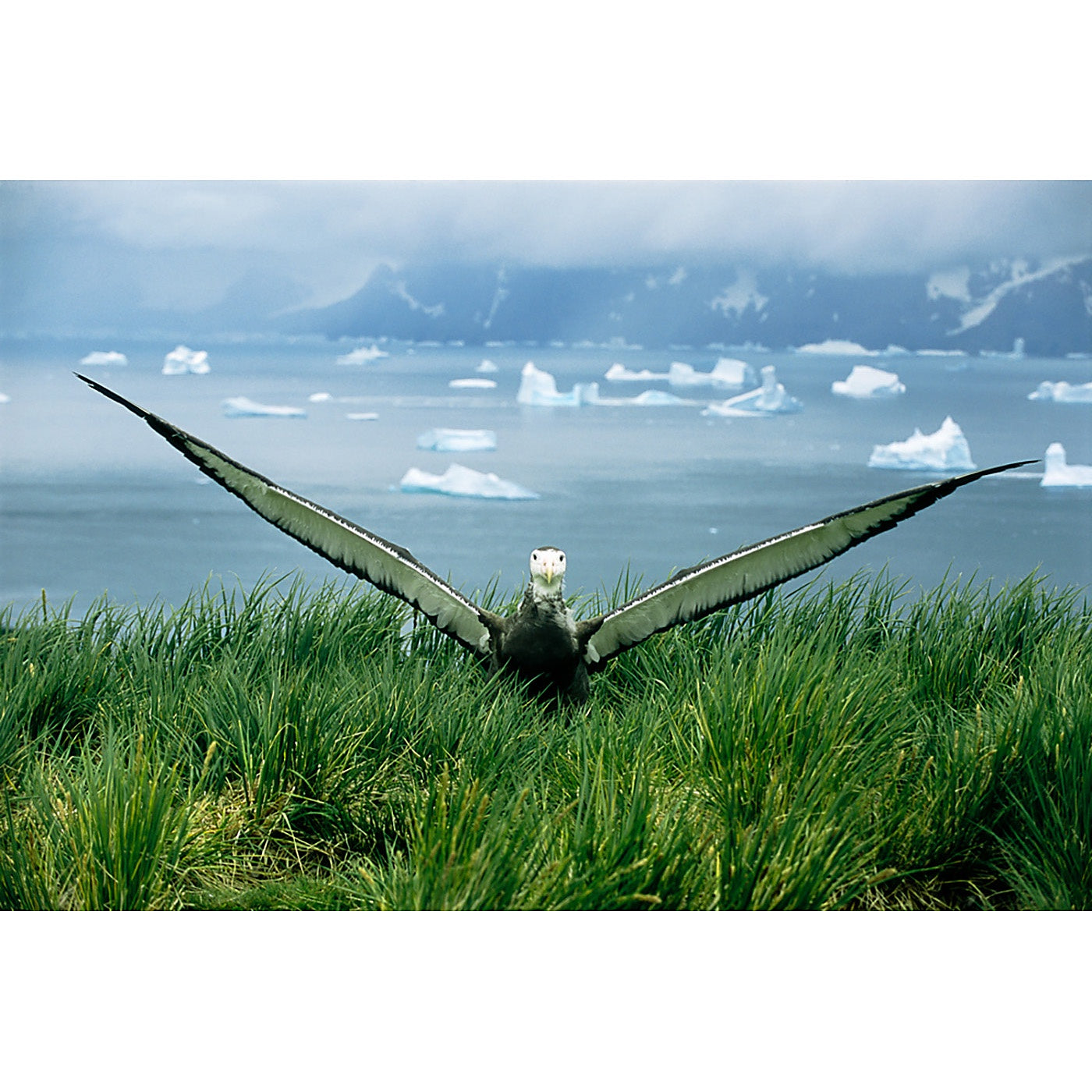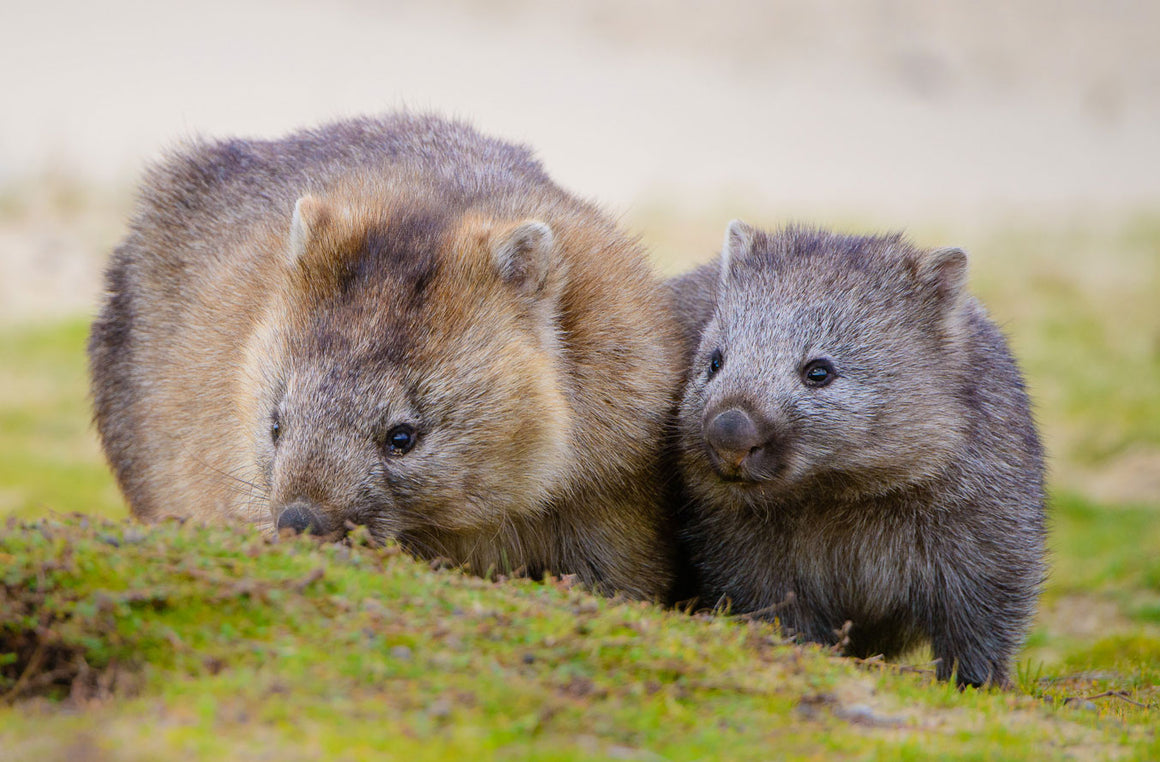Graham Robertson - The Fledgling
$160.00
The Fledgling
Graham Robertson
Wandering Albatrosses raise their chicks over an 11-month period with fledging commencing in the month of November. In the final days or weeks of the chick growing period adults abandon their offspring, leaving them to fend for themselves. Maturity and hunger eventually drive youngsters from their natal sites. The lead up to the actual act of fledging involves lots of practice controlling those enormous wings against the strength and erratic movement of the wind. Nervous at first, birds hover on outstretched wings just above tussock, their undercarriage of large, webbed, feet lowered for stability. They bounce around in the air like corks bobbing in the ocean, to get the feel of the breeze. Eventually, after days or weeks of practice, sufficient strength and confidence will have been acquired to have a crack at flying.
The fledgling in the photograph holds its wings at maximum stretch. The white under feathers exposed on the leading edges of the wings and sideways orientation of downy remnants on the upper neck, are tell-tale signs its windy. A good day for the maiden flight. There’s no runway and no such thing as taxiing. The next decent gust will send the bird soaring off into the wide blue yonder. The next few years will be spent wholly at sea. One day it’ll be time to breed and the bird will return to the island from whence it came to raise chicks of its own. Photo taken on Annenkov Island. The main South Georgia island is visible in the background.
The Wildlife of South Georgia Island
Graham Robertson is internationally acclaimed research scientist and an accomplished wildlife photographer. He has visited South Georgia Island on a number of occasions throughout his career. Graham’s great passion is the Albatross, and his images of these and other extraordinary creatures of South Georgia Island reflect his life long efforts to conserve these wonders of nature.
Graham spent the first 14 years of his career with the NSW National Parks and Wildlife Service working as a plant ecologist in western NSW. A bushwalking trip to Tasmania in the early 1980s resulted by chance in a trip to Albatross Island (Bass Strait), which proved to be a career changing experience. Research trips to Macquarie Island and other seabird breeding sites around the world followed to acquire experience, which in 1988 led to his appointment by the Australian Antarctic Division as overwintering biologist to Mawson station to study emperor penguins.
By the time of his return from Antarctica the impact of longline fisheries on global albatross populations had gained international attention. That provided an opportunity for Graham to work at the interface between primary industry (fisheries) and conservation biology, in an attempt to modify the entrenched behaviours and practices of longline fishing industries to reduce their impacts on seabirds. From 1995 until his retirement from the Antarctic Division in 2014 his research included studies of albatross-fisheries interactions and, especially, the development of seabird-friendly fishing gears and practices for various longline fisheries around the world.
In 2004 he was awarded a Fellowship in Marine Conservation by the Pew Charitable Trusts (USA) for research on the Spanish system of longline fishing for Patagonian toothfish. He is the recipient of two Australian Antarctic medals, the first (in 1989) for overwintering studies of emperor penguins and the second (2012) for contributions to seabird conservation in fisheries.
The photographs in this exhibition were taken on two trips to South Georgia, the first a research trip and the second a private trip made specifically to capture the courtship dance of the wandering albatross, one of the most iconic seabirds in the world. The intention was to use the photographs of wanderers in full display to attract the attention of the general public to the threats posed by industrial fisheries to seabird conservation in general. This exhibition will be the first time that Graham has displayed these images in a public exhibition.
Please note; Prints are made to order. Please allow 10-15 business days for your delivery.


